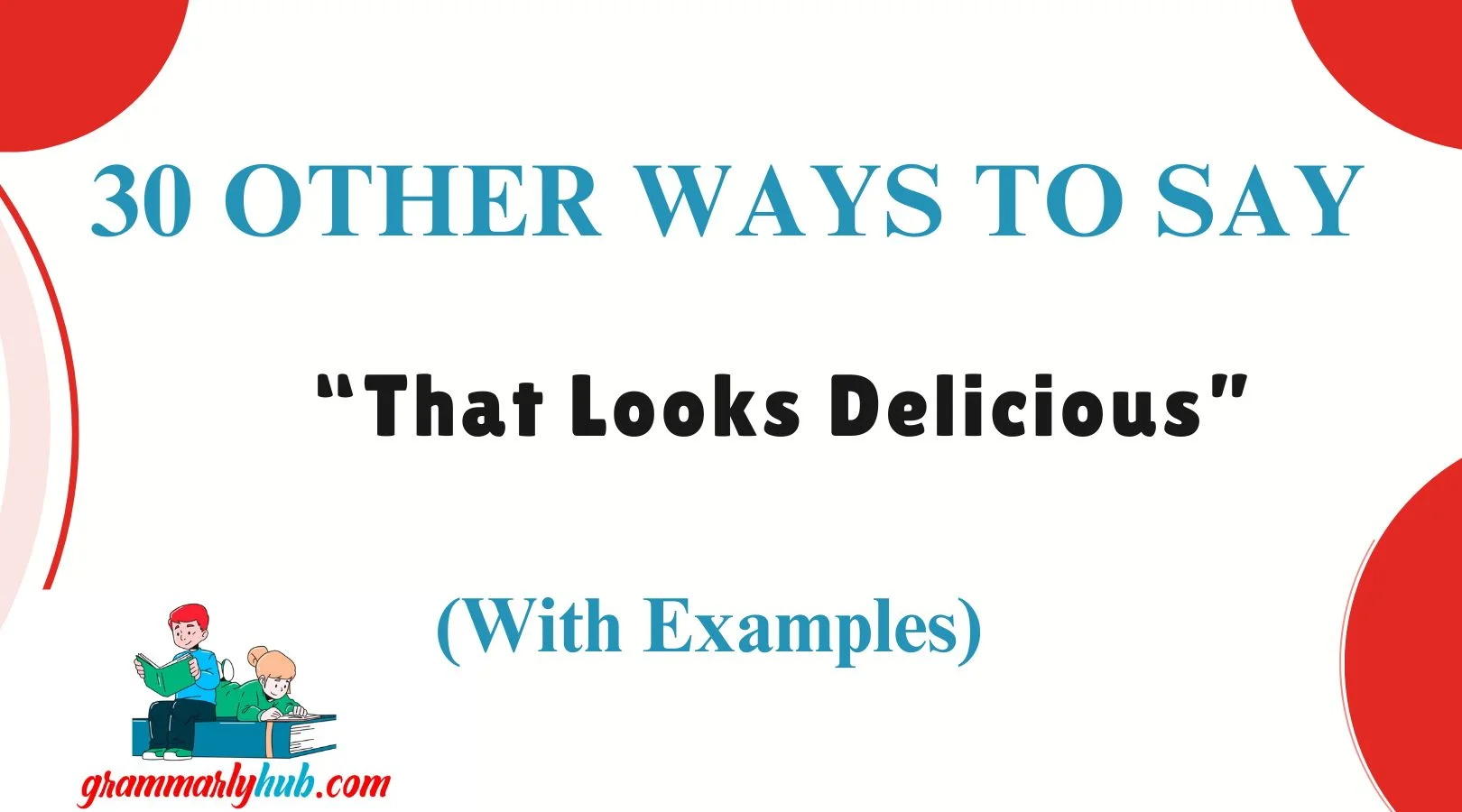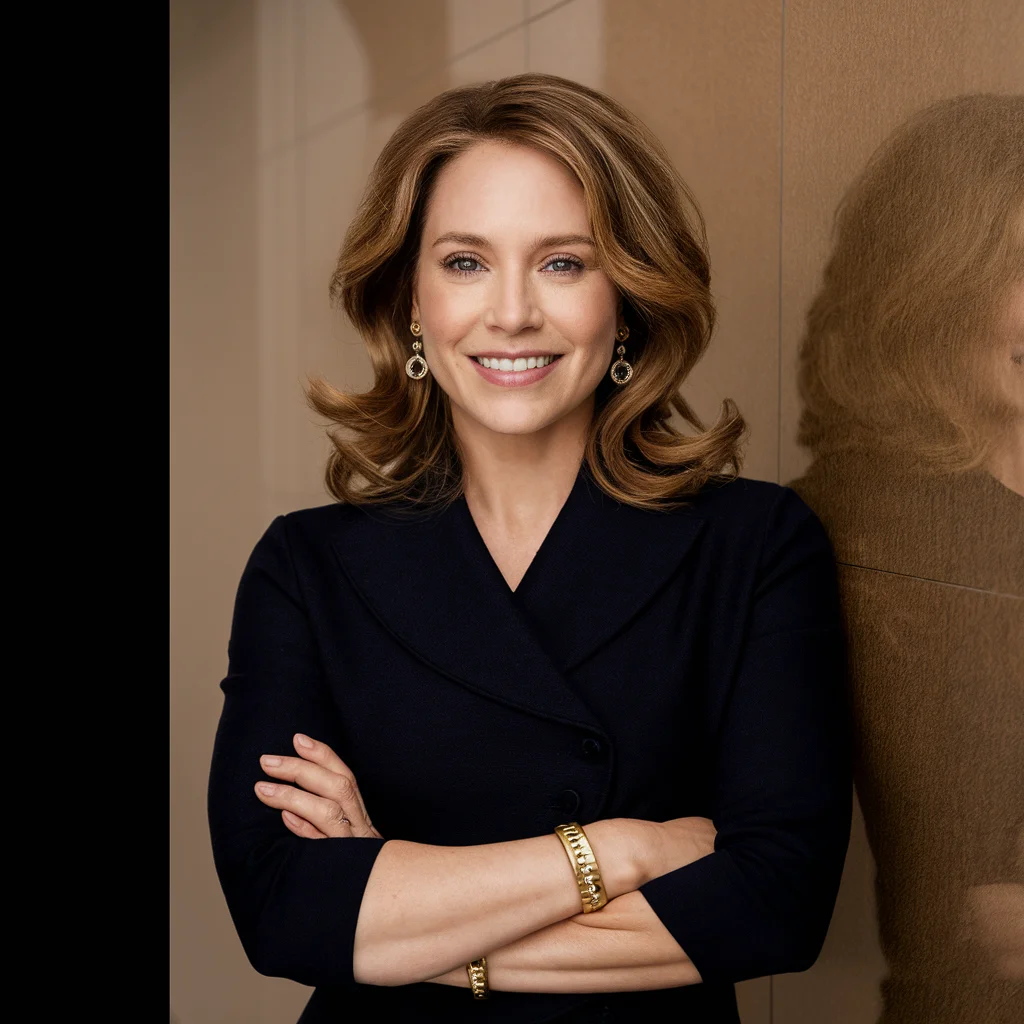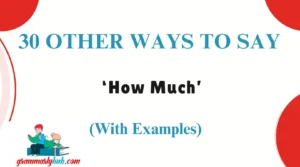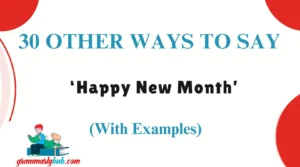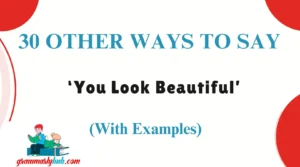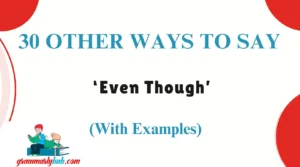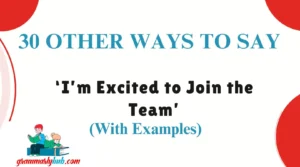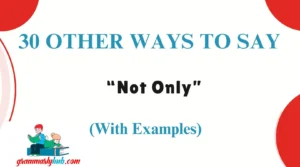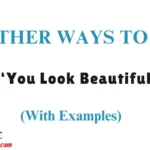Sometimes, a simple phrase like “That looks delicious” doesn’t quite capture the warmth, admiration, or sincerity we want to express when someone shares a meal they’ve prepared—or a dish we’re excited to try. Whether you’re commenting on a friend’s home-cooked meal, complimenting a chef, or responding to a food post online, finding fresh, thoughtful, and empathetic ways to express yourself can make your words feel more personal and memorable.
In this article, we’ll explore 30 original alternatives to help you express appreciation with more depth, warmth, and charm. Each phrase includes meanings, tone analysis, usage examples, and guidance on when to use or avoid it.
What Does “That Looks Delicious” Mean?
“That looks delicious” is a warm, appreciative phrase used to compliment the visual appeal of food. It typically conveys positive anticipation, hunger, or admiration for how appetizing a meal appears. It’s often used socially to show encouragement or appreciation to someone who has cooked or shared food.
When to Use “That Looks Delicious”
Use this phrase:
- When you’re admiring someone’s meal in person or online
- To compliment the effort someone has put into their cooking
- In a friendly, casual, or family setting
- When you want to make someone feel proud of their food
Is It Professional/Polite to Say “That Looks Delicious”?
Yes, it’s generally polite in most social and casual professional environments. However, in very formal or corporate communication, it’s better to use more refined language such as “That looks quite appetizing” or “That presentation is exquisite.” Avoid using it in overly formal written contexts unless it’s meant to convey friendliness.
Pros and Cons
Pros:
- Warm and friendly
- Universally understood
- Works well in casual settings
Cons:
- Overused and may sound generic
- Lacks personalization or depth
- Doesn’t always suit professional environments
Synonyms For “That Looks Delicious”
- That looks mouthwatering
- It looks absolutely scrumptious
- Now that’s a feast for the eyes
- That meal looks like a masterpiece
- It looks insanely good
- That looks like pure comfort on a plate
- Your dish looks heavenly
- That looks too good to eat
- Looks like a culinary dream
- It’s plated to perfection
- That looks out of this world
- Now that’s what I call food
- Your cooking always amazes me
- That looks sinfully tasty
- That’s food art right there
- Looks like something from a gourmet magazine
- That dish is calling my name
- I’d love to dive into that
- Looks like five-star dining
- That’s a whole vibe on a plate
- That’s next-level delicious
- That’s what I call soul food
- It looks irresistibly good
- That could be on a cooking show
- That looks rich and flavorful
- That looks like comfort and joy
- That’s a plate of perfection
- That has me drooling
- That’s total food envy
- I can almost taste it from here
1. That looks mouthwatering
Definition: A way to express that food looks so good, it makes your mouth water.
Explanation: It emphasizes the visceral, instinctive reaction we have to truly appetizing food.
Tone: Excited, appreciative, casual
Example Scenario: Your friend posts a lasagna they made from scratch—this is a perfect, enthusiastic comment.
Worst Use: Avoid in ultra-formal environments; sounds too expressive for a business dinner post.
2. It looks absolutely scrumptious
Definition: Highlights that the food appears delicious and satisfying.
Explanation: “Scrumptious” is a playful, older word that adds charm and whimsy to your compliment.
Tone: Charming, cheerful, slightly old-fashioned
Example Scenario: Perfect for complimenting a child’s homemade cookies or grandma’s pie.
Worst Use: Avoid in modern or minimalist culinary settings—it might sound too old-school.
3. Now that’s a feast for the eyes
Definition: The food looks visually stunning and vibrant.
Explanation: This phrase implies that even just looking at the meal is a joyful experience.
Tone: Artistic, visual, warm
Example Scenario: Ideal for colorful platings, gourmet meals, or Instagram-worthy dishes.
Worst Use: Not ideal for casual meals like cereal or fast food.
4. That meal looks like a masterpiece
Definition: The food presentation is so good it resembles artwork.
Explanation: It implies high praise for both flavor and visual creativity.
Tone: Elegant, admiring, thoughtful
Example Scenario: Great for meals that show effort and creativity, like a five-course dinner.
Worst Use: Avoid overusing—it can sound exaggerated if said too often.
5. It looks insanely good
Definition: A casual, strong compliment indicating excitement and admiration.
Explanation: This phrase adds energy and modern slang appeal.
Tone: Casual, enthusiastic, informal
Example Scenario: Great for reacting to a burger, pasta, or street food photo on social media.
Worst Use: Avoid in formal writing or with unfamiliar people—it’s too casual.
6. That looks like pure comfort on a plate
Definition: The food gives emotional comfort and visual warmth.
Explanation: Often used for home-cooked, hearty meals like stews, casseroles, or pasta.
Tone: Warm, nostalgic, caring
Example Scenario: Perfect for a friend’s cozy dinner photo on a cold day.
Worst Use: Doesn’t suit cold or minimalist food presentations like sushi or fruit platters.
7. Your dish looks heavenly
Definition: The meal appears otherworldly or divine in quality.
Explanation: Conveys admiration that’s uplifting and almost spiritual in tone.
Tone: Graceful, complimentary, idealistic
Example Scenario: Great for beautifully baked desserts or well-balanced meals.
Worst Use: May sound over-the-top for simple meals like sandwiches.
8. That looks too good to eat
Definition: The presentation is so beautiful, you hesitate to ruin it by eating.
Explanation: It flatters the aesthetic aspect of the dish.
Tone: Admiring, playful, respectful
Example Scenario: Perfect for an elaborate dessert, charcuterie board, or artistic bento box.
Worst Use: Avoid using for messy or rustic dishes—it may come off as sarcasm.
9. Looks like a culinary dream
Definition: Describes food that feels like a dream—fantastic and ideal.
Explanation: Expresses that the meal is magical and above expectations.
Tone: Romanticized, dreamy, high-praise
Example Scenario: Excellent for chef-level dishes or luxury meals.
Worst Use: Avoid for basic meals—it can feel insincere.
10. It’s plated to perfection
Definition: Focuses on the professional presentation of the dish.
Explanation: Great for appreciating the effort in styling or arranging food.
Tone: Refined, professional, precise
Example Scenario: Perfect for fine dining or food competition photos.
Worst Use: Avoid using with sloppy or casually served meals—it can feel ironic.
11. That looks out of this world
Definition: A phrase used to describe something so amazing, it doesn’t seem like it belongs on Earth.
Explanation: This expression is used to show extreme admiration—usually when food looks uniquely impressive or creative.
Tone: Amazed, exaggerated, enthusiastic
Example Scenario: Perfect for a mind-blowing dessert or an exotic dish with vibrant colors and textures.
Worst Use: Avoid using for very plain or familiar meals—it may come off as sarcasm.
12. Now that’s what I call food
Definition: A strong declaration that this is the kind of meal that truly deserves to be called “food.”
Explanation: It adds a tone of bold approval, often implying this dish is real, satisfying, and impressive.
Tone: Casual, hearty, confident
Example Scenario: Great when a friend serves a large, comforting dish like steak and mashed potatoes.
Worst Use: Might sound dismissive if said in contrast to someone else’s food—avoid in group situations.
13. Your cooking always amazes me
Definition: A personal compliment that acknowledges someone’s consistent skill.
Explanation: This expression shows emotional sincerity and consistency—ideal for building someone’s confidence.
Tone: Personal, warm, genuine
Example Scenario: Great for someone you know well, like a partner or parent who frequently cooks for you.
Worst Use: Avoid with strangers or in public comments where “always” might seem exaggerated or forced.
14. That looks sinfully tasty
Definition: A playful way to say that the food looks indulgent or too delicious to resist.
Explanation: “Sinfully” adds a light, cheeky tone, often used with rich, sweet, or calorie-heavy dishes.
Tone: Playful, indulgent, flirty
Example Scenario: Perfect for commenting on a chocolate lava cake or cheesy pasta bake.
Worst Use: Avoid in formal settings or around people sensitive to food-related guilt or health topics.
15. That’s food art right there
Definition: Acknowledges that the presentation of the dish is artistic and carefully crafted.
Explanation: It blends appreciation for food and visual design, complimenting both the chef’s taste and aesthetic.
Tone: Artistic, elegant, respectful
Example Scenario: Great for sushi platters, dessert sculptures, or meals with artistic plating.
Worst Use: Don’t use it on sloppy or simple food—it can sound sarcastic.
16. Looks like something from a gourmet magazine
Definition: Compares the food to professionally styled meals seen in culinary magazines.
Explanation: This phrase celebrates high visual standards, often used for fine dining or photogenic food.
Tone: Refined, aesthetic, impressed
Example Scenario: Perfect for a food blogger’s brunch or a plated chef’s dish with vibrant ingredients.
Worst Use: Avoid using it for meals with poor lighting or messy presentation—it may sound mocking.
17. That dish is calling my name
Definition: A playful way to say you feel drawn to the food and want to eat it.
Explanation: It expresses desire and excitement, usually in a friendly or flirtatious tone.
Tone: Casual, enthusiastic, expressive
Example Scenario: Use when replying to someone’s irresistible dessert post or plate of nachos.
Worst Use: Avoid using it in highly professional settings or around unfamiliar people—it can sound too familiar.
18. I’d love to dive into that
Definition: A way to say you’re eager and excited to eat the food right away.
Explanation: This phrase suggests strong hunger or desire, and adds a bit of fun imagery.
Tone: Hungry, casual, enthusiastic
Example Scenario: Perfect for cozy, inviting meals like lasagna or curry on a cold day.
Worst Use: Too informal for business or formal social settings—can sound overly eager.
19. Looks like five-star dining
Definition: Compares the meal to something you’d expect in a top-rated restaurant.
Explanation: This compliment highlights sophistication and quality—especially in how it’s cooked or presented.
Tone: Professional, admiring, polished
Example Scenario: Excellent for a home-cooked gourmet dish or high-end restaurant meal.
Worst Use: Avoid if the food is obviously casual—it might feel patronizing.
20. That’s a whole vibe on a plate
Definition: This phrase suggests that the dish gives off a strong, aesthetic, or emotional energy.
Explanation: It’s a trendy, modern way to say the food’s presentation, mood, and feel are all in sync.
Tone: Trendy, warm, expressive
Example Scenario: Perfect for cozy fall dishes, brunch plates, or themed food boards.
Worst Use: Avoid using it with traditional or older audiences—it may not resonate.
21. That’s next-level delicious
Definition: A phrase that shows the food goes beyond normal standards of taste.
Explanation: “Next-level” is modern slang for advanced, exceptional, or elite quality.
Tone: Bold, energetic, trendy
Example Scenario: Great when tasting something unexpectedly amazing, like a new twist on a classic recipe.
Worst Use: Avoid in formal settings—it’s very casual and can sound vague without context.
22. That’s what I call soul food
Definition: Describes food that is nourishing, comforting, and emotionally satisfying.
Explanation: “Soul food” often refers to dishes that connect with tradition, heart, and deep enjoyment.
Tone: Comforting, nostalgic, soulful
Example Scenario: Perfect for southern classics, stews, mac and cheese, or anything homemade with love.
Worst Use: Avoid using it with light or trendy meals—it’s more about heart than finesse.
23. It looks irresistibly good
Definition: You simply can’t resist how good it looks—it’s tempting on every level.
Explanation: Strongly emphasizes craving and temptation, while remaining polite.
Tone: Tempted, sincere, enthusiastic
Example Scenario: Great for gooey desserts, pizza, burgers—anything you really want to eat.
Worst Use: Avoid if you’re trying to sound neutral or reserved—it’s quite intense.
24. That could be on a cooking show
Definition: Says the food is good enough to be featured on TV—beautiful and professional.
Explanation: This is high praise for both appearance and originality.
Tone: Admiring, fun, uplifting
Example Scenario: Ideal for creative presentations, baking challenges, or home chef experiments.
Worst Use: Avoid if the person doesn’t like public attention—it may sound performative.
25. That looks rich and flavorful
Definition: Used to describe food that appears to have a deep, full-bodied taste and luxurious texture.
Explanation: “Rich” suggests something indulgent or creamy, while “flavorful” adds a note of taste complexity. This phrase conveys depth, quality, and satisfaction.
Tone: Warm, appreciative, savory-focused
Example Scenario: Perfect for dishes like beef bourguignon, butter chicken, or chocolate ganache cake.
Worst Use: Avoid for light meals or salads—it may feel mismatched or over-the-top.
26. That looks like comfort and joy
Definition: This phrase blends emotional warmth with a sense of culinary pleasure.
Explanation: You’re not just complimenting the food’s appearance—you’re saying it radiates comfort, nostalgia, and happiness, like a cozy blanket on a plate.
Tone: Tender, sentimental, affectionate
Example Scenario: Great for family recipes, baked casseroles, or holiday meals.
Worst Use: Avoid on overly fancy or minimalist plates—it may not feel fitting.
27. That’s a plate of perfection
Definition: A declaration that the dish is flawless—in look, balance, and likely taste.
Explanation: It’s a strong, confident compliment that recognizes craft, care, and completeness in food presentation.
Tone: Polished, enthusiastic, complimentary
Example Scenario: Ideal for sharing praise on a well-balanced, beautifully presented entrée or dessert.
Worst Use: Don’t use it sarcastically or on something clearly imperfect—it could be misread as mockery.
28. That has me drooling
Definition: A playful, vivid way to express strong craving and anticipation just from looking at the food.
Explanation: “Drooling” exaggerates desire—it’s not literal but humorously dramatic. Use when you want to sound hungry and enthusiastic.
Tone: Casual, fun, expressive
Example Scenario: Perfect for burgers, fries, cheesy dishes, or anything extra indulgent.
Worst Use: Too informal for professional comments or when you need to maintain decorum.
29. That’s total food envy
Definition: This phrase means you wish you had that food—you’re a bit jealous in the best way.
Explanation: It’s commonly used online to compliment someone else’s meal by admitting playful envy.
Tone: Trendy, playful, lighthearted
Example Scenario: Great for commenting on social media when a friend posts a fantastic dish or travel meal.
Worst Use: Avoid in person if the speaker is insecure or if envy might be misunderstood as resentment.
30. I can almost taste it from here
Definition: Used to express that the food looks so real and vivid, it practically leaps off the screen or table.
Explanation: This expression emphasizes strong sensory appeal—the food looks so tempting, it’s as if you’re experiencing it already.
Tone: Imagery-rich, sincere, admiring
Example Scenario: Perfect for digital conversations, like commenting on a friend’s Instagram or cooking video.
Worst Use: Avoid if the food doesn’t look very striking—it might feel exaggerated or false.
✅ Conclusion
Finding new ways to say “That looks delicious” helps you sound more personal, thoughtful, and warm—especially in today’s digital and food-loving world. Whether you’re complimenting a loved one’s cooking, showing appreciation on social media, or just expressing sincere enthusiasm, the 30 alternatives above give you a full palette of empathetic, vibrant, and original phrases to choose from.
Each of these options allows you to connect with others in more authentic and expressive ways, helping your compliments stand out and feel truly meaningful.
❓FAQs About Saying “That Looks Delicious”
1. What’s another way to say ‘That looks delicious’ on social media?
You can say: “That’s total food envy”, “I can almost taste it from here”, or “That has me drooling.” These expressions sound more trendy and visually engaging—perfect for platforms like Instagram or TikTok.
2. Is it okay to say “That looks delicious” in a professional email or work message?
Yes, but it’s best to keep it polite and professional. Try alternatives like: “That looks like five-star dining” or “Beautiful presentation—looks incredibly tasty.” Avoid overly casual or playful phrases like “That has me drooling” in formal settings.
3. How can I compliment homemade food without saying ‘delicious’?
Try warm and thoughtful alternatives like: “Your cooking always amazes me,” “That looks like comfort and joy,” or “That’s a plate of perfection.” These show appreciation for both the effort and the emotional value behind the meal.
4. What phrase can I use for visually stunning food photos?
Use creative and visual-rich compliments like: “That’s food art right there,” “Looks like something from a gourmet magazine,” or “That could be on a cooking show.” These flatter the visual appeal and presentation of the dish.
5. Can I say “That looks delicious” for desserts and sweets too?
Absolutely! But you can get even more specific with: “That looks sinfully tasty,” “That has me drooling,” or “That looks out of this world.” These add extra flavor to your compliment, especially for indulgent treats.
6. What are polite but enthusiastic alternatives to ‘That looks delicious’?
Try phrases like: “That looks rich and flavorful,” “Looks like five-star dining,” or “That’s next-level delicious.” These show enthusiasm while maintaining a tone of respect and admiration.
7. What’s the difference between “That looks delicious” and “That smells amazing”?
“That looks delicious” compliments the visual appearance, while “That smells amazing” praises the aroma. Both are valid compliments—just focused on different senses

Emma Brooke is the voice behind Grammarly Hub, where grammar meets clarity. With a deep passion for the written word, Emma helps readers navigate the tricky waters of English grammar, writing tips, and effective communication.
